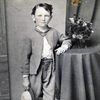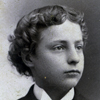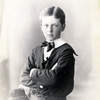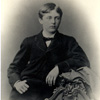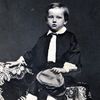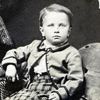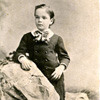Boys
Click
on an image for a larger view
|
As boys neared the age of six, they began to identify more strongly
with masculine characteristics and tendencies. Where gender played
a negligible role in the way boys were treated throughout infancy,
by the time they reached childhood they were expected to fulfill
the strongly defined role of the “real boy”. Photographs of boys
of this age contrived to display the transition from infancy to
boyhood through choices in costume, positioning and setting.
Boys had more closely cropped hair, wore trousers, and were
often captured outdoors. The world of games and sports outside
of the home that boys began to discover played an increasingly
important role in their lives—and as they grew, the youth culture
of |


